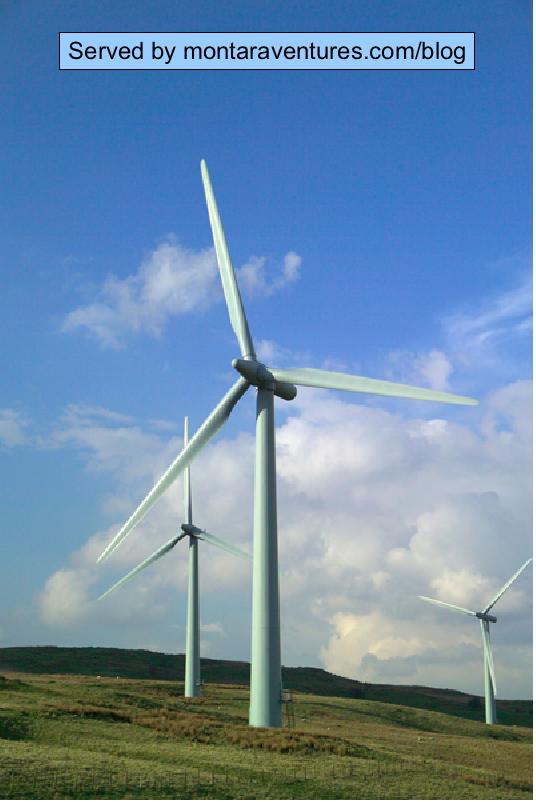A mighty wind
And I’m not talking about the movie of the same title… Do you know how much a cubic meter of dry air weighs at sealevel?
About 1kg (1.0007 kg to be exact.) Air also has pressure, at sea level, about 10,194 kg/square meter (14.5 lbs/square inch.) Air also moves, you might have noticed this phenomena called wind. As the Sun heats the atmosphere air will naturally flow (convection) moving from high pressure areas to low pressure areas – it’s effectively a way for the atmosphere to move heat around.
So we’ve got mass and we’ve got movement which means that there must be a way to harness this excess energy flowing around the planet. For many thousands of years humans have used sails to capture the wind and for hundreds of years, sails anchored in place attached to a shaft converting wind energy to mechanical energy. This energy was used in the past to pump water, saw wood, grind things, etc. Today, high efficiency wind turbines are available and being installed for the purpose of converting wind energy into electricity.
Utility scale wind turbines

Each wind turbine has a shaft connected to a gearbox that drives an electrical generator. The turbines also have brakes, yaw and pitch controls, weather stations, and power transmission capability built into them (see diagram below.) Each turbine in a wind farm transmits its power to a shared substation where the electricity is stepped up to the right voltage to enter a supply line for the electricity grid.

The electric production capacity harvested from wind energy has grown from 2.8 gigawatt hours (GWh) in 1992 to 18.8 GWh in 2006 (trailing twelve month calculation.) Wind farms are now sprouting up in many different states across the US with Texas now leading wind production closely followed by California.
Major advantages to wind generated electricity start with fuel cost, $0. Wind farms are also very low impact on the environment in terms of emitted pollution into the atmosphere, ground, and water. In addition, wind farms literally provide another crop for farmers as the actual land usage tends to be small (less than 200 sq meters) for each turbine allowing agriculture to continue even as wind is harvested. Wind farms are also relatively easy to construct and put into service taking an average of 18 months to complete.
The major disadvantages to wind power are predictability of supply, one cannot guarantee that wind will blow when demand for power exists. Also, aesthetics, many people do not like to see ridges peppered with large steel towers with rotating props. And finally, avian impacts. In some wind installations, the death rate for birds, particularly raptors is elevated due to collisions with the props and towers. Each of these issues has solutions and with each new installation, the objections decrease.
Even taking into account the disadvantages, wind still is a vital part of the renewable energy portfolio and continues to grow at a fast pace.
Technorati Tags: Energy | Wind | Turbine








